Reading Improvement Normal Vowels Worksheets for Ages 3-9
5 filtered results
-
From - To
Enhance your child's reading skills with our engaging Normal Vowels Worksheets, tailored for ages 3-9. These comprehensive worksheets focus on improving reading fluency and comprehension through interactive activities that make learning fun and effective. Designed to introduce and reinforce normal vowels in a playful manner, our resources are perfect for early learners. Each worksheet is carefully crafted to encourage recognition, spelling, and pronunciation of vowels, fostering a strong foundation in literacy. Help your little ones build confidence and excitement for reading with these fun-filled exercises that align with their developmental needs. Start their reading journey today and watch them thrive!
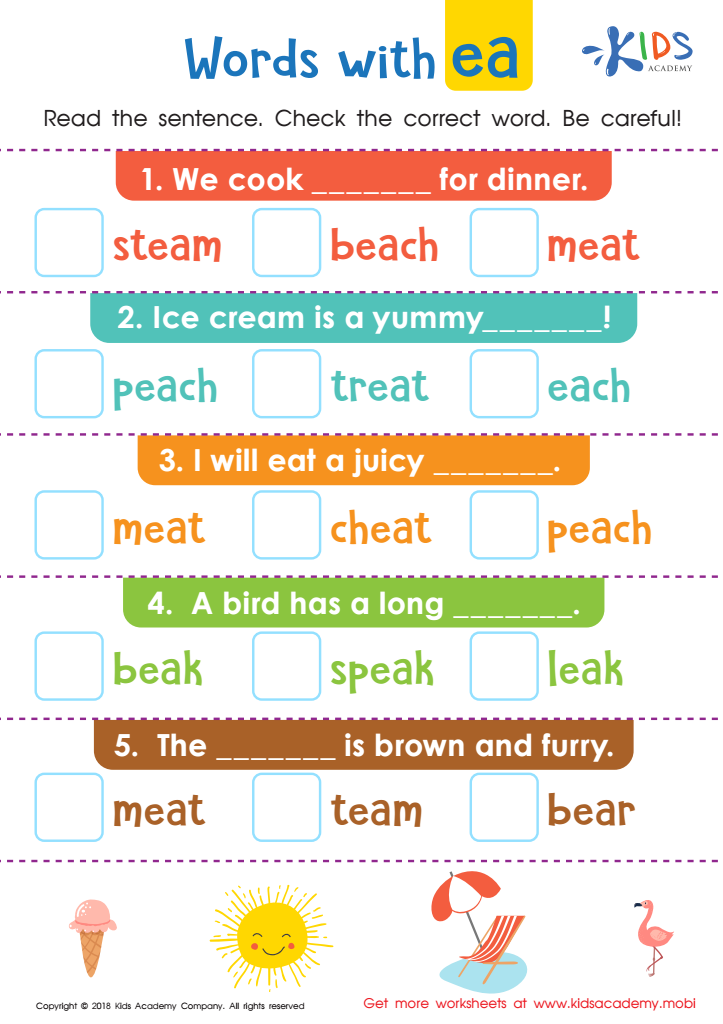

Words with ea Worksheet
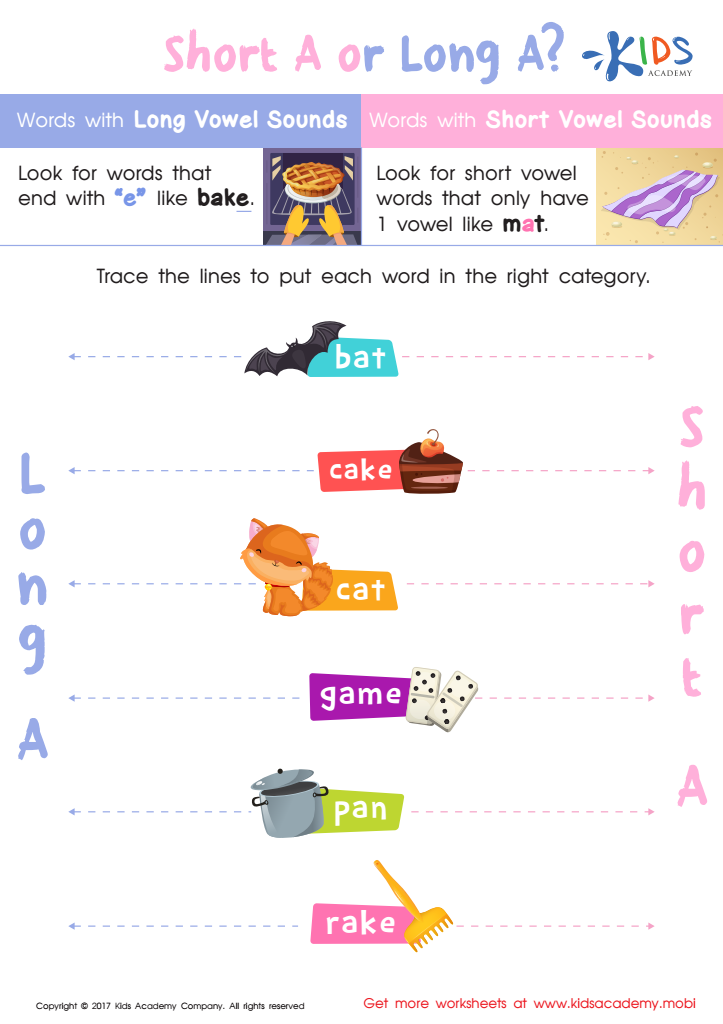

Short /a/ or Long /a/? Worksheet
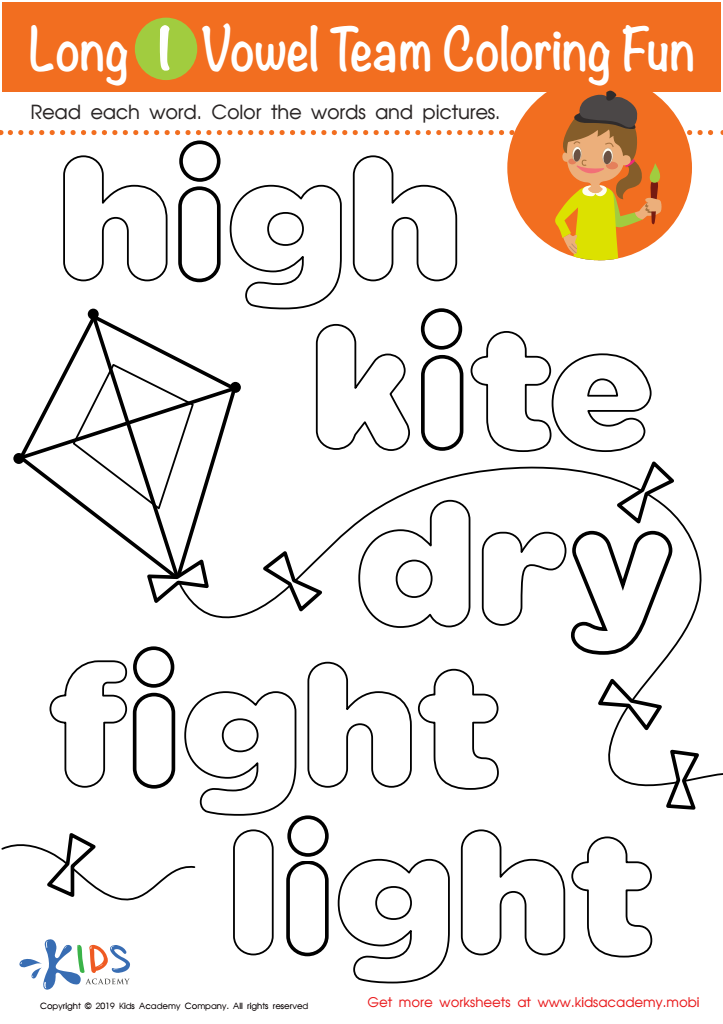

Long I Vowel Team Coloring Worksheet
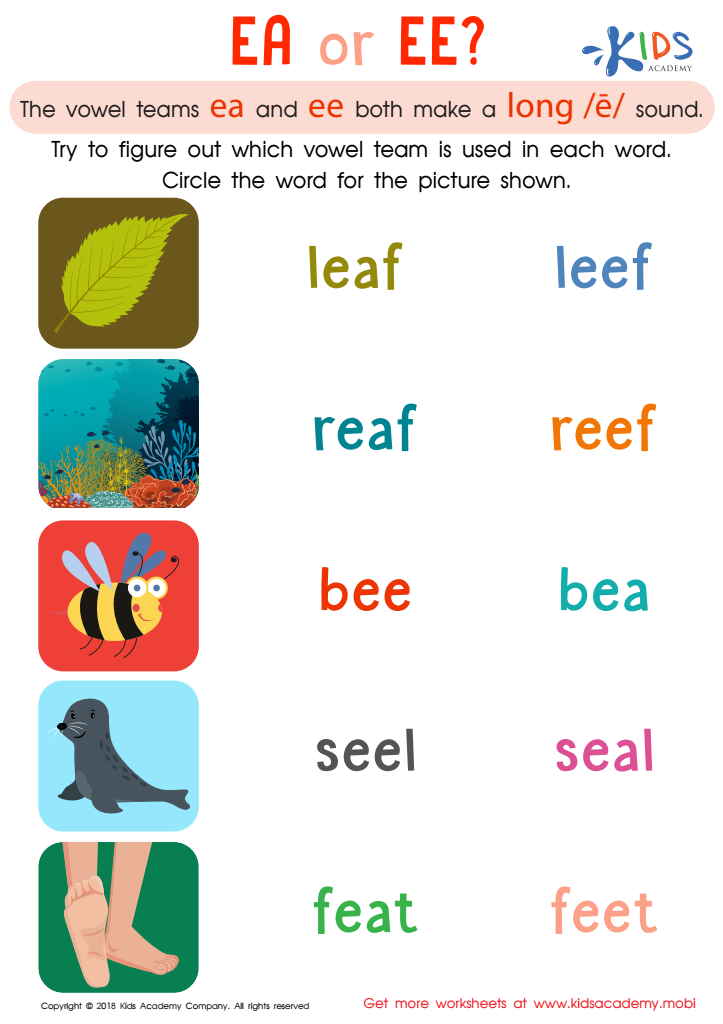

Reading: EA and EE Worksheet
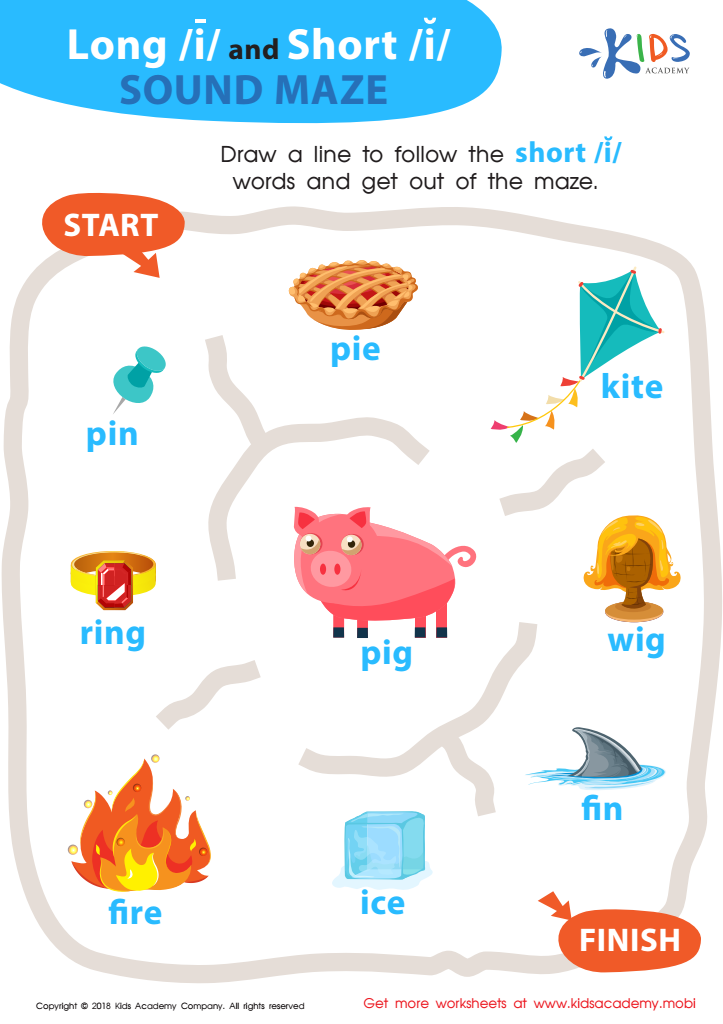

Reading: Long I and Short I Sound Maze Worksheet
Parents and teachers should care about Reading Improvement Normal Vowels for children aged 3-9 because mastering vowel sounds is crucial for early literacy development. Understanding normal vowels—both short and long—forms the foundation of reading and enhances children's ability to decode words accurately. This skill not only supports their pronunciation but also boosts their confidence while reading aloud, fostering a love for literature.
At this age, children are developing phonemic awareness, which is essential for spelling and reading comprehension. By focusing on vowel sounds, educators and parents can help children recognize patterns in words, enabling them to read more fluidly and with greater understanding. This improvement directly influences their overall academic performance, as strong reading skills are vital across all subjects.
Furthermore, engaging with normal vowels through fun activities and phonics games can create a positive reading environment. When children associate learning with play, they are more likely to develop a lasting interest in reading.
Finally, early intervention in vowel mastery can mitigate long-term literacy challenges. By prioritizing reading improvement in this critical stage, we equip children with the tools not only to succeed academically but also to foster a lifelong passion for reading.
 Assign to My Students
Assign to My Students












